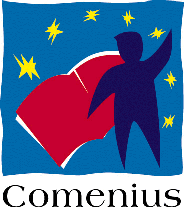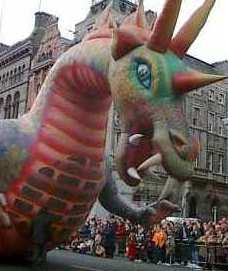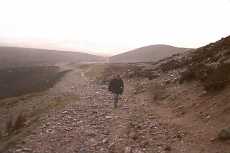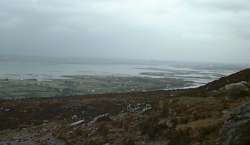|
|
St Patrick's Day |
|
||||
|
The St Patrick Story St Patrick was Welsh! Imagine that. The patron
Saint of Ireland wasn’t even Irish. In fact St Patrick’s name was Maewyn
Succat. He was born into a Christian family in Wales in the year 415AD. When
the young Patrick was 16 he was kidnapped by an Irish pirate who took him to
what is present day Co Antrim in Northern Ireland. Very little is known about Patrick’s early life
but when he came to Ireland he worked minding pigs on Slemish Mountain for a
farmer named Milchu. While he was out in the fields it is said he became very
close to God. We are told it was prayer that got Patrick through the cold
days and nights on the mountain. Before returning to Wales Patrick became
fluent in the Irish language. However one day he was told to run away and to
find a boat to take him home. |
|
|||||
|
Eventually Patrick made his way to France where
he was ordained as a priest and took the name Patrick. He soon became a
Deacon and after some time he became a Bishop. Pope Celestine eventually
asked him to go to Ireland and spread the Christian faith there. It seems
that Ireland was not his first port of call as there are many places in
Brittany, Wales, Scotland and Cornwall that bear his name. From this point onwards in the life of St
Patrick it is hard to tell what is legend and what is history. There are many
stories of how St Patrick banished all snakes from Ireland. These tell of him
standing atop Croagh Patrick and banishing the snakes with his staff in a
Moses like fashion. It is much more likely however that there had been no
snakes in Ireland since it was cut off from continental Europe after the last
Ice Age. Instead it is thought that this was a metaphor for how he banished
the pagan ways and brought Christianity to Ireland. |
|
|||||
|
|
Patrick travelled all around Ireland converting
Clan Chiefs and Warriors to Christianity and their followers also. He
baptised many of these converts at wells all around the country. It was also
Patrick who abolished the pagan rites and sacrifices at Tara. St Patrick died on the 17th of March
493AD. There are two separate stories relating to the burial of St Patrick.
The first says that he was buried in the same grave as St Bridget at St
Columba in Downpatrick, Co Down. The other states that his body rests in the
St Patrick Chapel in Glastonbury Abbey in the south of England. |
|||||
|
Drink!!! If there is one thing Irish people are renowned
for it’s their tendency to drink too much. On no other day is this more
apparent then on St Patrick’s Day. Guinness, Murphys, Paddy, Baileys and many
more besides, they’re all Irish and they’re all famous alcoholic drinks. It
seems that the celebration of our Patron Saint is the perfect excuse for a
drink and why not? Even St Patrick couldn’t get away from that side of the
celebration, with the Pota Padraig (Patrick’s Pot) being the name of the
traditional measure of whiskey drunk on St Patrick’s Day. It is also part of
tradition to float a shamrock on top before knocking it back, giving rise to
the phrase; "Drowning the Shamrock". |
|
|||||
|
|
Parades Despite what most people may think the St
Patrick’s Day parade does not originate in Ireland. The first St Patrick’s
Day parade was held in Boston in the USA by an organisation called "The
Charitable Irish Society of Boston" in 1737. It didn’t take long for the
idea to cross the Atlantic and today in Ireland every city and town in the
land seems to have its own parade. Of course it’s not just in Ireland where
these parades and celebrations are held, but anywhere where there are people
with Irish roots. |
|||||
|
Although in many places St Patrick’s Day is not
a Public Holiday, many cities close down for the day nonetheless. The biggest
of these parades are held right here in Dublin, New York, Chicago and Boston.
In Chicago they even reverse the flow of the river under Michigan Avenue and
Mike Butler and his engineering crew dye the waterway green. This idea first
came about in the1960s when the mayor Richard Daly decided to impress
visitors to the city. Since then the river goes green once a year |
|
|||||
|
|
St Patrick’s Day parades the world over are
festivals of colour, music and magic. The streets of towns and cities are
awash with marching bands, floats, people and fun. It’s just infectious! The
parades are a celebration of Irishness. People wear green, the traditional
Irish colour and many pin shamrocks onto their jackets for the day. This
year, as part of the St Patrick’s Day Festival, a £300,000 pyrotechnics
(that’s fireworks to you and me) display is being put on. An Australian
expert is being brought over to co-ordinate the display. Above all St
Patrick’s Day promises to be a great day to be Irish…….. |
|||||
|
|
||||||
|
|
Croagh Patrick Every year close to 100,000 people undertake the
pilgrimage up to the summit of this 2500ft mountain, known by the locals as
the Reek. This huge mountain (in Irish terms anyway) fills the local skyline
in its Mayo location. On a clear day it is said that one can see a large
portion of the surrounding Mayo landscape, sadly it is also true that there
aren’t many clear days on top of this 765m beast. It is here on this mountain, Croagh Patrick,
that St Patrick spent 40 days and 40 nights just as Jesus Christ and Moses
had done in their respective homelands. It is also said that St Patrick
banished all the Irish snakes into a hollow atop Croagh Patrick known as Lug
na Demon and that they remain there to this day. Pilgrims have been following
Patrick’s example for about 1,500 years now and they show no signs of
stopping. |
|
|
|
In the early 1800’s a man called Robert Binn
lived on top of Croagh Patrick. He lived there for 14 years and it is said
that he was doing penance for all those who could not come themselves. When
he died he asked to be buried on the Reek and to this day he is the only
person known to have his funeral celebrated on the mountain. More happily,
many people have tied the knot on the mountain (I can imagine the wedding
dress!). It seems however that there were others there
even before Patrick ascended the Reek around 441AD. In 1995 excavations
showed that there had been a stone hillfort and dwellings there before the
advent of Christianity. Among the earliest finds are beads, which date back
to the 200s (that’s the 3rd century). |
|
|
|
On the last Sunday in July, known as "Reek
Sunday", there is a special Christian service for the pilgrims. One of
the most unusual things about the Croagh Patrick climb is the fact that many
undertake it in their bare feet, most likely because Patrick went up the Reek
in his bare feet also. The climb begins at the Saint Patrick statue at
the base of the mountain, erected by a Father Patterson in 1928. It is also
as far as many get, such as celebrity visitor, Princess Grace of Monaco. The
climb is not terribly difficult to the young and fit but for the rest of us
it is said that the site of the church at the peak is worthy of a prayer or
two. John Donlan |
|
Email:
aidancbs@iol.ie
Copyright © 1998 St Aidans CBS
Last modified: March 10, 1999














